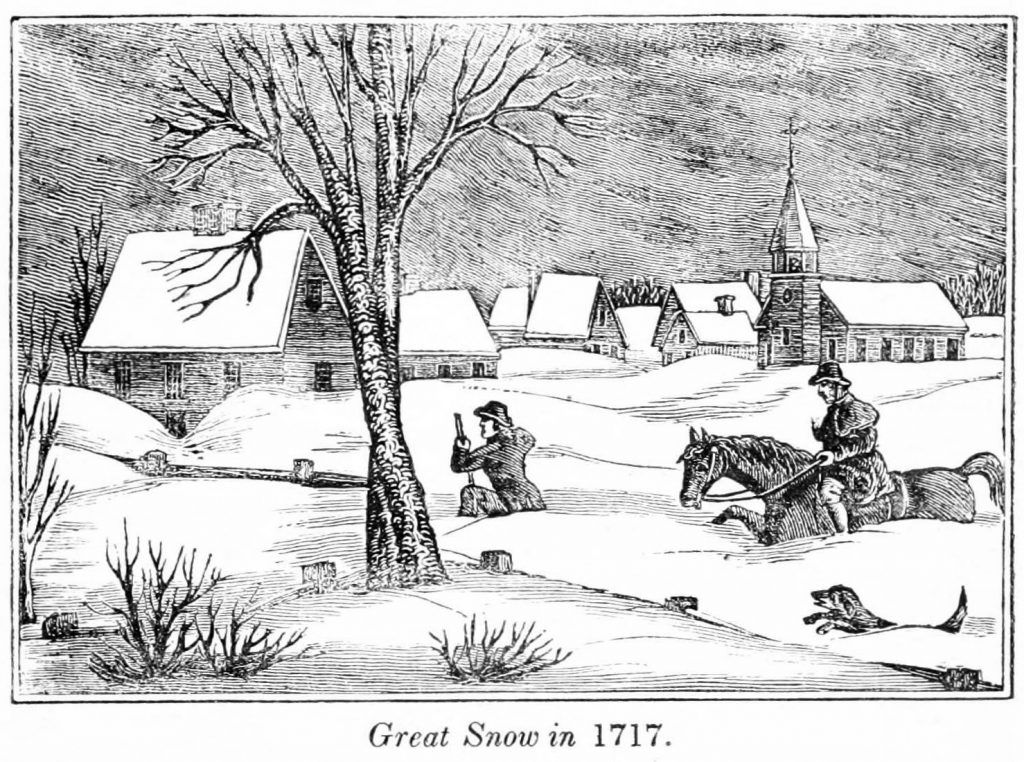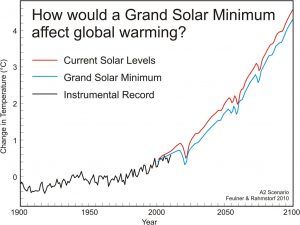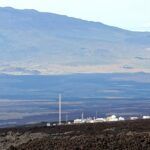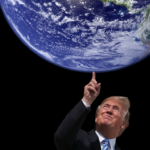Little Ice Age? No. Big Warming Age? Yes.
By Dana Nuccitelli | December 17, 2018
 Woodcut of a famous 18th-century winter in Massachusetts, during what some have called the "Little Ice Age," for lack of a better term. But compared to full-blown ice ages, it was short-lived and puny, scientists say. Image from "History and Antiquities of New England," published 1856. Courtesy of New York Public Library. See related Bulletin article “Little Ice Age? No. Big Warming Age? Yes.”
Woodcut of a famous 18th-century winter in Massachusetts, during what some have called the "Little Ice Age," for lack of a better term. But compared to full-blown ice ages, it was short-lived and puny, scientists say. Image from "History and Antiquities of New England," published 1856. Courtesy of New York Public Library. See related Bulletin article “Little Ice Age? No. Big Warming Age? Yes.”
In September, a website called Space Weather Archive interviewed Martin Mlynczak of NASA’s Langley Research Center. Mlynczak noted that because the sun is currently in a relatively inactive period, the thermosphere (one of the highest layers of Earth’s atmosphere, more than 300 miles above the surface) could reach its coldest temperatures since records began in the 1940s.
The interview didn’t mention Earth’s surface temperatures, where the past five years have been the five hottest since records began in the late-1800s. However, the British newspaper Metro then ran a story falsely claiming that: “It’s feared this could herald the arrival of a uniquely grim ‘mini Ice Age.’ ”
Like a bad game of Telephone, this inaccurate reporting then spread throughout the conservative media, including Fox News, the Drudge Report, Rush Limbaugh, and Sarah Palin’s Twitter page. The story was debunked by the climate scientists at Climate Feedback, and Metro subsequently issued a correction, but the damage had been done.
The ‘imminent mini ice age’ myth rears its ugly head in the conservative media like clockwork every year or two. It’s always based on claims that the sun is headed into an inactive phase, like those that coincided with what has popularly been called the “Little Ice Age”—the period from roughly about the 16th to 19th centuries when some exceptionally cold winters made the Thames River sometimes freeze so solidly that Londoners held winter fairs on the ice, and contemporary diarists wrote that the snow was so deep in New Hampshire that people burned their furniture because they couldn’t get to the woodshed. (“…[O]ur last Winter brought with it a Snow that excelled them all,” wrote Cotton Mather in his diary in 1717, under the heading “An Horrid Snow.”) But the term Little Ice Age is a misnomer, and some climate scientists have argued that the name should be abandoned. It was not a full-blown ice age at all (or even a little one), but rather a very short-lived and puny climate and social perturbation, by the standards of geologic time.
Not headed for another grand solar minimum. It’s true that the sun is in a relatively quiet period, with the amount of energy reaching the Earth (Total Solar Irradiance, or TSI) lower than it has been since the mid-1900s. But TSI is still significantly higher than it was during the so-called Little Ice Age, and likely higher than at any time between the 1600s and 1940, for that matter. Particularly during the late-1600s, there was a period when only about two sunspots were observed per year. (Sunspots are an indicator of solar activity). Scientists coined this type of period a “grand solar minimum.” For comparison, in 2018 there have been about 50 sunspots observed.
It remains an open question when another grand solar minimum could occur. Northumbria University mathematics professor Valentina Zharkova created a model that predicts the sun will enter another grand minimum phase lasting from about 2020 to 2055. But solar scientists have criticized this model as being overly simple and flawed. For example, Ilya Usoskin, head of the Oulu Cosmic Ray Station in Finland and vice-director of the country’s ReSoLVE Center of Excellence in Research, published a critique of Zharkova’s solar model, noting that it was created based on just 35 years of data and fails to accurately reproduce past solar activity. And if it cannot accurately reproduce past solar activity, then how can it be expected to accurately predict future activity?
In contrast to Zharkova’s findings, in a new paper just published in Nature Communications, solar scientists Prantika Bhowmik and Dibyendu Nandy at the Center of Excellence in Space Sciences, India, created a model that successfully reproduced the sun’s cycles back to the 1930s–more than double the number of years (and data points) used in Zharkova’s troubled model. Based on a longer timeline and our understanding of the sun’s physics, their model predicts that the next 11-year solar cycle (between about 2019 and 2030) will be relatively quiet, similar to the current one, but it will still be much more active than during previous grand solar minimum events.
I spoke with Ilya Usoskin, who was not involved in the research of Bhowmik and Nandy but finds their results to be credible, based as they are on a physical model driven by observational data. Usokin noted that the next 11-year solar cycle can generally be modeled reasonably accurately once the minimum of the current cycle is approached. But later solar cycles beyond the year 2030 cannot be reliably predicted now, before the minimum of the next solar cycle, because of the more random and unpredictable component of solar activity.

The Little Ice Age was… little. Research has also shown that global average surface temperatures only cooled by about 0.5 degrees Celsius during the Little Ice Age. For comparison, temperatures have risen 1 degree Celsius over the past century due to human-caused global warming. If the prior period was a little ice age, then the current period is a Big Warming Age.
Moreover, scientists have concluded that the sun was only responsible for a small fraction of the cooling during the Little Ice Age. In fact, a 2017 paper led by the University of Reading’s Matthew Owens concluded that humans had a cooling effect of about the same size as the quiet sun during that period, through changes in land use: We replaced dark forests with lighter agricultural land, which increased the Earth’s overall reflectivity. Volcanic activity—which was particularly high during the Little Ice Age and has a cooling effect by pumping particles into the atmosphere that block sunlight—appears to have been the biggest contributor to the modest cooling during this period.
Numerous studies have also shown that even if we were to enter an extended solar minimum period, it would offset no more than 0.3 degrees Celsius of warming. For comparison, humans are currently causing about 0.2 degrees Celsius of global warming per decade. Moreover, the solar cooling influence would be temporary, lasting only until the end of the quiet solar phase.
In short, credible solar models do not predict that we’re headed for another grand solar minimum.
And even if, defying the credible solar models, we were lucky enough to have a grand solar minimum suddenly occur at just the precise moment that we need it most to save us from climate change, it would offset at most 15 years’ worth of human-caused global warming, and only temporarily.
We’re fortunate that the sun is relatively stable.
Unfortunately, humans are not.
Together, we make the world safer.
The Bulletin elevates expert voices above the noise. But as an independent nonprofit organization, our operations depend on the support of readers like you. Help us continue to deliver quality journalism that holds leaders accountable. Your support of our work at any level is important. In return, we promise our coverage will be understandable, influential, vigilant, solution-oriented, and fair-minded. Together we can make a difference.
Keywords: Little Ice Age, climate models, grand solar minimum, sun cycles
Topics: Analysis, Climate Change
















Yes, the variation in solar activity is unrecognizable from the noise in the GMT. I’m limited with my little old desktop computer (though it is a super computer by 1950 standards) running R. But it is statistically insignificant. The effect of CO2 and ocean heat cycles swamps everything else.
And, if it requires a super computer and advanced statistical techniques to find an affect, it is generally not of any immediate practical importance.
“And, if it requires a super computer and advanced statistical techniques to find an affect, it is generally not of any immediate practical importance.”
There is about 1 watt per meter squared at the top of the atmosphere difference of incoming and outgoing energy. The practical importance is actually quite high. That’s why we have IPCC consolidation of climate evidence.
The little Ice Age actually started around 1300 AD and about 1850, when the Industrial Revolution began and when the NAO began to moderate itsGreenland High and low cycles. Mt. Tambura erupting in 1815 creating the “year without a summer” in 1816 caused widedpread cooling of the planet and agricultural disruption and famine for decades. Thosands died.
> and about 1850,
– An obvious typo for “and ended about 1850”
> actually started around 1300 AD
Which suggests to me that it may have been due in part to the recently-discovered volcanic eruption with worldwide climate effects that occured around then.
Correct. The amount of warming in the arctic won’t be offset very much by any coming solar minimums. The majority of weather stabilization, occurring mostly on the poles and desert areas due to higher CO2 won’t be affected much by slightly less sun power. If there’s anyone living at the poles they will hardly notice the average winter temp change of -40C to -35C or -30C if we let runaway global warming continue.
CO2 levels were much higher throughout Earth’s history and life abounded. There was no North Polar ice cap until about 2.6 mya – forming during the Pliocene and has lasted since. You forgot to mention that less solar radiation allows more cosmic radiation which effects cloud cover. The IPCC predictions have been less accurate than a bone throwing shaman so please avoid preaching the AGW religion. The panels are political appointments. We didn’t fathom the Pacific and Atlantic periodical oscillations until relatively recently and I don’t recall much talk about el Ninos & other named weather cycles 30 or more… Read more »
You say “CO2 levels were much higher throughout Earth’s history and life abounded”, by which you try to misdirect your readers into thinking that there is no problem with the human caused higher CO2 level in the atmosphere over the past two centuries up to today.
In the geological past or pasts that you are alluding to – humans did not exist. The increased CO2 in our atmosphere is causing serious climate change now, with more to unfold.
Global temperature is directly related to human population. Albert
Plant trees and stop the mass deforestation. Nuclear and solar instead of fossils fuel.